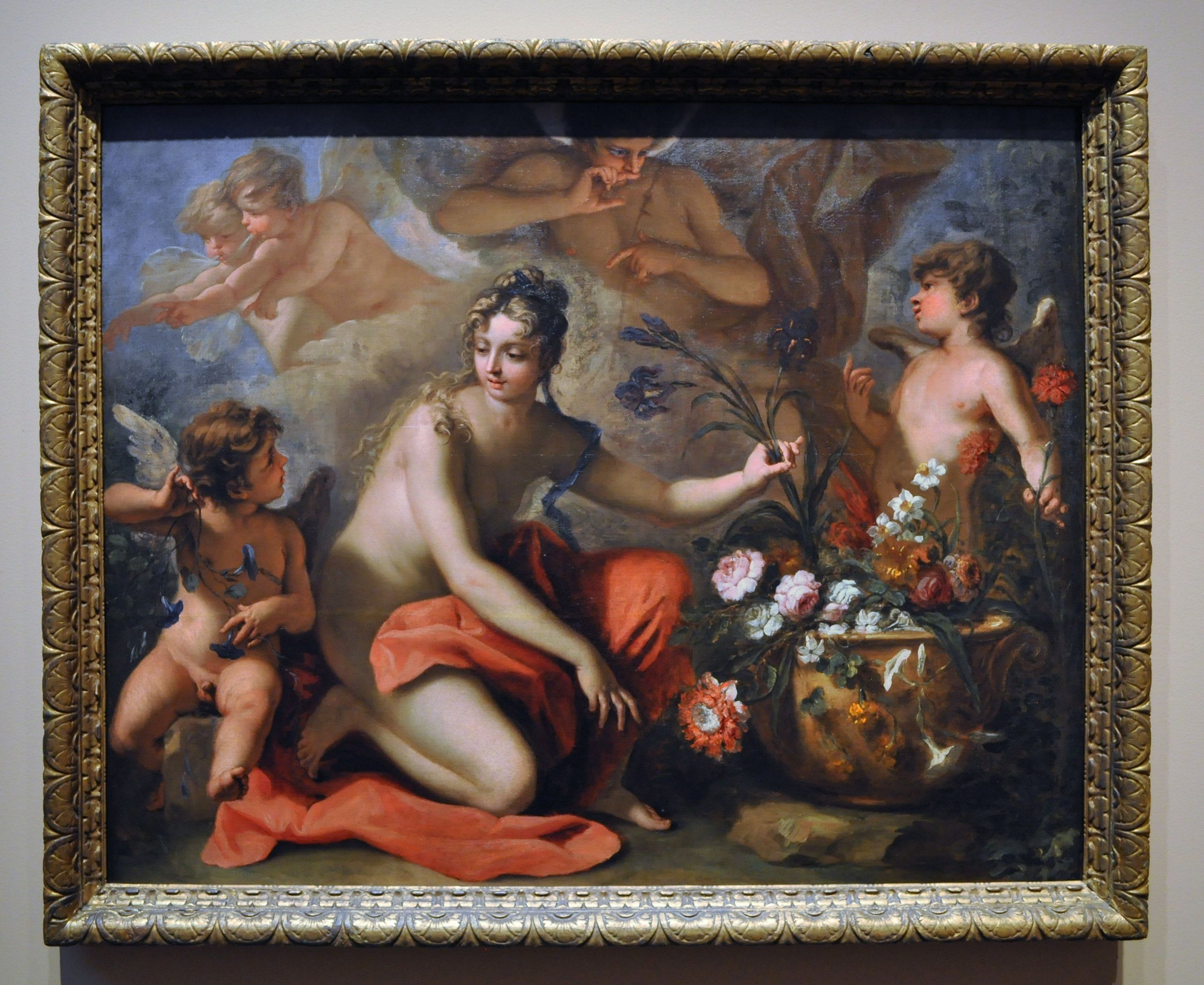This image has been scaled down to fit your computer screen. Click on it to show it in the original size.
 |
 |
Sebastiano Ricci
Belluno, Italy, 1659-Venice, 1734
Flora, ca. 1712-16
Oil on canvas.
In Ovid’s Fasti, the nymph Chloris is seduced by the West Wind, Zephirus, and renamed Flora, goddess of flowers and spring. An important Roman deity, she was associated with voluptuousness. This painting renders the moment before her seduction: as Flora flirts with one putto and suggestively grasps the stem of an iris, Zephirus approaches from behind, indicating his quarry and cautioning silence to another putto. At the right, a vessel spills over with blossoms that portend the result of their union and celebrate their namesake. The design is so equilibrated, the rhythm so elegant, and the handling so rich that a quotation from antique statuary – the Kneeling Venus – appears seamless. The painting recalls the great mythological works of sixteenth-century Venice.
Ricci inaugurated the second great age of the Venetian school. Trained in Bologna, Parma, and Rome, he absorbed the full range of late Baroque classicism. Back in Venice by 1700, he consulted Luca Giordano’s recent examples of a more vital, eclectic style, and above all referred to Veronese’s grand reconciliation of painterly values and systematic decoration. The resulting style is synthetic, but with the classical component deeply assimilated, the optical component enhanced with sensuous brushwork. This style seems so radiant, so fluent, that it is easy to forget its intellectual foundation and critical historical role: Ricci also worked in London and Paris (1712-16), influenced Central European painting, and trained many of the next generation in Venice.